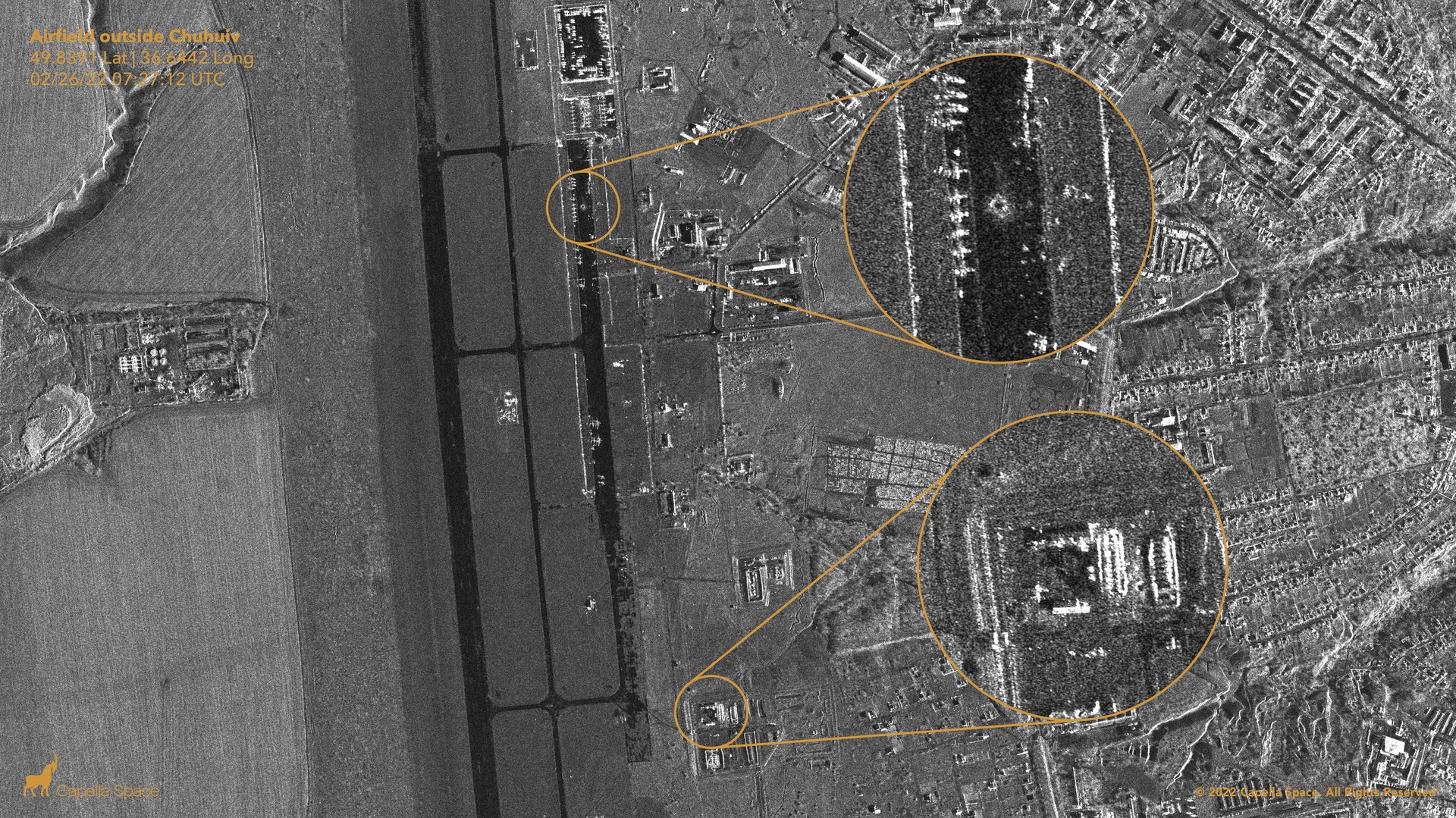The space radar company that spotted Russia’s invasion just raised $97m
Ukraine’s struggle against Russian invaders has been abetted by a steady flow of intelligence from the US government, including commercial satellite imagery, allowing Ukraine’s armed forces to target its enemies most vulnerable points.


Ukraine’s struggle against Russian invaders has been abetted by a steady flow of intelligence from the US government, including commercial satellite imagery, allowing Ukraine’s armed forces to target its enemies most vulnerable points.
Capella Space, the only US company providing space radar data to the US, is part of that push. Data collected by its seven satellites, which provide the highest resolution imagery of any private effort, is purchased by US intelligence agencies and armed services.
The San Francisco-based company announced that a $97 million fundraising round this week, led by the VC fund Nightdragon, which will support the launch of more spacecraft to improve the frequency and quality of its imagery. The company said its revenue has doubled in the last twelve months.
Why the military is so interested in space radar
When Capella was founded in 2016, the US military saw it as a promising way to keep an eye on North Korea’s nuclear missiles, even when clouds might block optical satellites. But its breakout role has been peering through the fog in eastern Europe.
“Technologies have really changed the dynamic of this conflict: Starlink, TikTok, and satellite imagery,” Capella CEO Payam Banazadeh told Quartz. The satellite internet network, the global video sharing platform, and the ubiquity of data collected from space have given both the combatants and the rest of the world a unique view of modern war.
Capella has been watching Ukraine closely since late 2021, Banazadeh said, responding to requests from customers which quickly became more than they could fulfill as the conflict ramped up.
“Being in a small start-up company and watching the events unfold in Ukraine and realizing that we can actually do something to help in that circumstance has been an amazing experience,” Dan Gettman, the company’s director of product, told Quartz.
New tools for new customers
Government customers have been key to Capella’s growth, in part because they are more used to working with radar data, which until recently was largely collected by government spacecraft. A German public-private partnership launched a space radar satellite in 2007, and the first privately owned space radar satellite was put in orbit by the Finish firm IceEye in 2018.
Capella is looking to provide more data to commercial customers as well, and recently debuted new analytics tools that make it easier to identify ships and detect changes automatically by comparing a base map to the most recent observations. Tools like that could help supply chain analysts spot delays outside ports, or allow mining companies (or environmental activists) to assess geological events.
Gettman says the company is working to figure out the right balance between its own analytical features and partnerships with other remote-sensing firms or companies that specialize in analyzing such data to provide customers with the most useful tools.
“The challenge in going downstream isn’t the software, but the domain expertise to fully understand the problem the user has,” Banazadeh says.